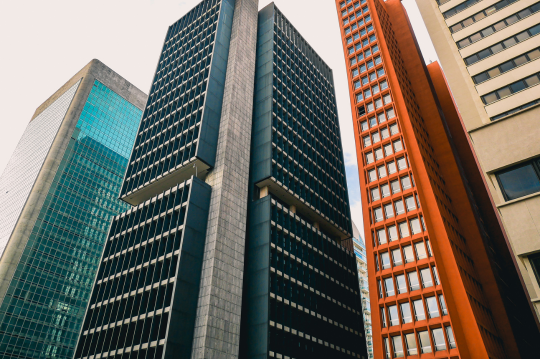
Balancing Aesthetics and Functionality in Modern Architecture
Modern architecture must harmonize beauty with practicality to create spaces that are both striking and usable. Aesthetic design involves elements like form, color, and materials that create visual appeal and emotional resonance. Functionality focuses on usability, including efficient space planning, accessibility, and energy efficiency. Successful architecture blends these aspects, as seen in projects like the High Line in New York City and The Edge in Amsterdam. By addressing both aesthetic and functional needs, architects produce structures that are not only visually captivating but also enhance daily living and meet practical requirements.
In the realm of modern architecture, striking a harmonious balance between aesthetics and functionality is both an art and a science. As architectural styles evolve and new materials and technologies emerge, architects face the dual challenge of creating structures that are not only visually captivating but also practical and sustainable. This delicate equilibrium is essential for producing spaces that are both beautiful and livable.
The Aesthetic Appeal
Aesthetics in architecture are about more than just visual allure; they involve the creation of a space that resonates emotionally and culturally. Modern architecture often embraces clean lines, minimalism, and the innovative use of materials. Iconic examples include the sleek glass facades of contemporary skyscrapers or the organic curves of Frank Gehry’s designs. These elements contribute to a building’s identity and can evoke a sense of wonder and admiration.
The use of color, texture, and form all play crucial roles in achieving aesthetic excellence. For instance, the strategic placement of windows can enhance natural light, creating a dynamic interplay of shadows and highlights that change with the time of day. Similarly, the choice of materials—whether it's the warmth of wood, the coolness of steel, or the texture of concrete—can influence both the appearance and the atmosphere of a building.
Functionality: Beyond the Basics
While aesthetics often grab the limelight, functionality is what ensures that a building meets its intended purpose efficiently. Functionality encompasses aspects such as space planning, accessibility, and energy efficiency. A well-designed space must accommodate the needs of its users while addressing practical concerns like ventilation, lighting, and acoustics.
For example, in residential design, functionality translates into layouts that maximize space and convenience. Open floor plans, integrated storage solutions, and user-friendly fixtures contribute to a home that is both comfortable and practical. In commercial buildings, functionality might involve optimizing workflow, ensuring ease of navigation, and incorporating flexible spaces that can adapt to various uses.
Integrating the Two: Case Studies and Innovations
1. The High Line in New York City:
A striking example of balancing aesthetics with functionality is the High Line, an elevated park built on a former railway line. The project transformed an abandoned industrial relic into a vibrant public space. Its design preserves the historic elements of the railway while incorporating lush landscaping, seating areas, and pathways that seamlessly integrate with the urban fabric. The High Line’s success lies in its ability to create a visually stunning park that serves as a functional recreational area and urban connector.
2. The Edge in Amsterdam:
Another example is The Edge, an office building in Amsterdam renowned for its focus on sustainability and user experience. The building’s design incorporates natural light, energy-efficient systems, and smart technology to create an environment that enhances productivity and well-being. Its sleek, modern appearance complements its functional features, demonstrating that a building can be both striking and practical.
Challenges and Considerations
Achieving the right balance between aesthetics and functionality is not without its challenges. Architects must navigate constraints such as budget limitations, building codes, and environmental considerations. Moreover, personal preferences and cultural contexts can influence the perception of what is deemed aesthetically pleasing or functional.
Innovative solutions often arise from addressing these challenges. For example, the use of green roofs not only adds to a building’s visual appeal but also contributes to energy efficiency and environmental sustainability. Similarly, adaptive reuse of existing structures can combine historical charm with modern functionality, creating spaces that honor the past while meeting contemporary needs.
The Future of Architectural Balance
As technology advances and societal needs evolve, the dialogue between aesthetics and functionality will continue to shape the future of architecture. Trends such as biophilic design, which integrates natural elements into buildings, and the rise of smart architecture, which utilizes technology to enhance functionality, are pushing the boundaries of what is possible.
Architects and designers will need to remain agile, embracing new ideas and materials while staying grounded in the core principles of both beauty and practicality. The ultimate goal is to create spaces that not only stand as architectural icons but also enrich the lives of those who inhabit them.
Conclusion
Balancing aesthetics and functionality in modern architecture is a dynamic and ongoing process. It requires a thoughtful approach that considers both the visual impact of a building and its practical performance. By integrating innovative design solutions and staying attuned to the needs of users, architects can create structures that are not only visually stunning but also serve their intended purposes with grace and efficiency. In doing so, they contribute to a built environment that is both inspiring and functional, enriching our everyday experiences and interactions with the spaces around us.

